page 2
~ The Study of Threes ~
| 1 | 2 | 3 | 4 | 5 |
| 6 | 7 | 8 | 9 | 10 |
Researchers as of 3/17/2021
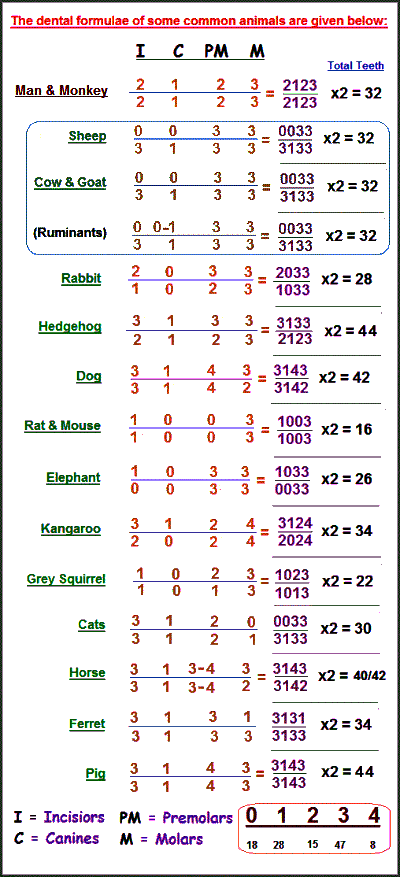 |
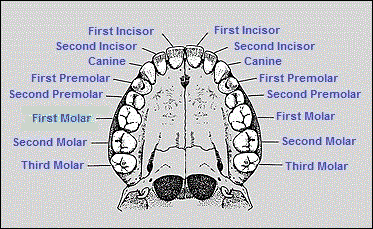 |
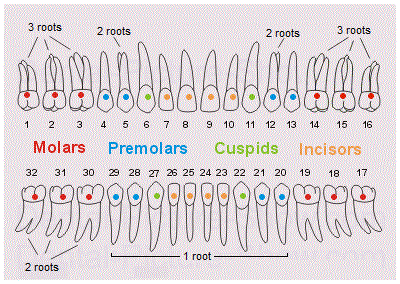 |
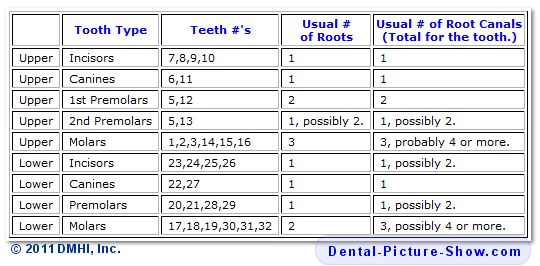 |
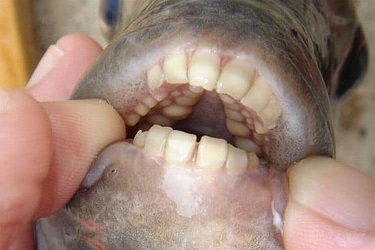 Human teeth in a Pacu fish or Fish teeth in humans? |
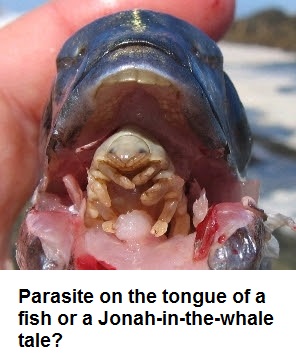 |
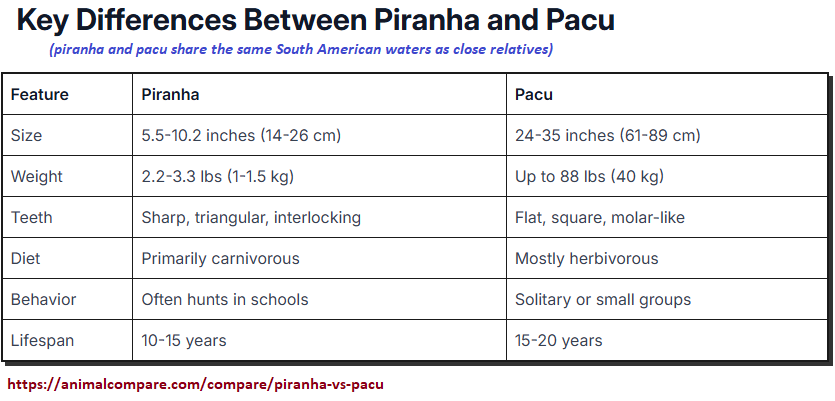
|
|
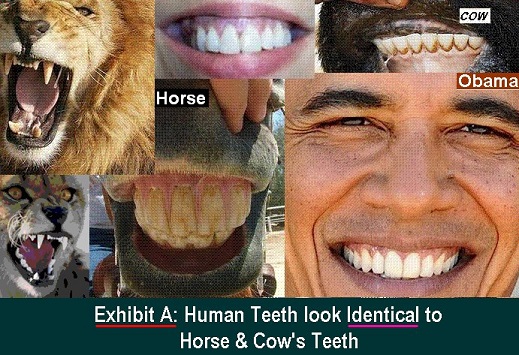 Humans Are Herbivores |
 Photos of Camels |
Yet, the enumerated patterns which we can apply to dentition (teeth), is a small bit of the larger occurrence of the "threes" phenomena to be found in anatomy and physiology. It's not that other patterns don't exist, it's just that the enumeration is not being looked upon with respect to an indication of a deteriorating environment that requires incremental adjustments be made as a coping... or adaptation... that can be identified as rationalization with respect to ideological changes.
The notion of "fusion" can be linked to the Sun's three "moments" called dawn, noon, and dusk. The rationale goes like this: Without the Sun, biology as we know it would be impossible, even those creatures which are in dark caves. Because of the dependency which biology has on the Sun, this "addiction" has forced anatomy and physiology to maintain a type of umbilical cord... sort of... attachment in that it mimics changes taking place in the physiology/anatomy of the Sun-Earth-Moon triad/complex. In addition, as the Earth's rotation slows and the Sun expands... even though we may not be able to identify the incremental changes... or define them as anomalies, the Sun's three "moments" will fuse together— and physiology/anatomy will have to take on this behavior as an adaptive characteristic. And let us not forget that an increasing human population causes related expansions in behavior as well as causing some things to slow down... while others may initially speed up like a set of billiard balls interacting with multiple other balls. No less, we must also contend with increased activity due to certain levels of increasing environmental temperatures, that at a given point can cause a decrease in behavior. I am speaking in generalities because not all of the variables are as yet placed into a single equation.
Like many things in the discussion of various events described as Evolution, the occurrences of "fusion" have not been forcibly articulated as a representative model of change for which a one-to-one correspondence of influence has been attempted with respect to any specific environmental event(s) or experience(s). For example, in the distant past there must have been something which occasioned the rise of a given quantity of toes/fingers, and yet this same increase provides an evolutionary record of a decrease. From nothing to a given number and then on some occasions, there is a decrease which may take on the expression of a fusion. Is it related to an overall incremental decay of the planet and/or planetary system?
Let me try to simply the above notion: If you look at the Sun at dawn, noon and dusk at the same time under present conditions (through a filtered lens of course), the Sun is seen as three "dots" in the sky. The more you slow down the Earth's spinning and increase the size of the Sun, the size of the three dots will increase to a point in which they overlap. This overlap is fusion. Any biological activity that is tied to it, whether or not we of the present can clearly identify such connections, will likewise fuse accordingly. Sometimes biological activity appears to be ahead of its time (in developmental maturation) and at other times it appears to be dragging its heels, just like some people whose ideas are said to be ahead of their time and others have views which appear to be more suited for a past age. While it is much easier for many of us to distinguish someone who appears to be "advanced" in their thinking, and in some cases we identify someone who is suggested as being "advanced" in physiology, we do not know the full spectrum of what "advancement" (or backwardness) means when the full spectrum of our biology/anatomy/physiology are taken into account. We are still very naive in this day and age.
Now let's move on to audiology (hearing):
Because hearing is related to speech and some consider speech asserts a tit-for-tat influence on brain development and cognition, we can not speak of one without giving a reference to the other, though many attempt to hold them as different hostages of research. The importance of hearing... on speech, is easily recognized when one observes a deaf person attempting to vocalize. No doubt there are variations of compensatory behavior that come into play to perform some substitute functioning like an adaptive brain which may develop a "speech center" in the right brain hemisphere if there is some type of obstructive occurrence which prevents the "speech center" from developing in its typical left hemisphere abode, this occurrence is noted in passing so that those readers who are accustomed to criticizing another's research in an area they feel they have acquired some expert knowledge about a given subject, don't attempt to interject the idea as a means of discounting the general statements and information being provided.
|
|
|
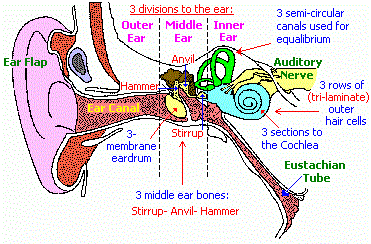 |
 |
| 3 overall divisions: | Outer ear~ Inner ear~ Middle ear |
| 3 middle ear divisions: | Tympanum~ Epitympanum~ Mastoid antrum |
| 3 eardrum membranes: | Cutaneum~ Collagen fibers~ Mucosm |
| 3 semi-circular canals: | Used for balance (equilibrium) |
| 3 bones: | (ossicular chain) Incus~ Stapes~ Malleus |
| 3 main malleus ligaments: | Anterior~ Lateral~ Superior |
| 3 incus anchorage points: | Malleus~ Stapes~ Bony fossa wall |
| 3 cochlea sections: | (Scala) Vestibuli~ Tympani~ Cochlear duct |
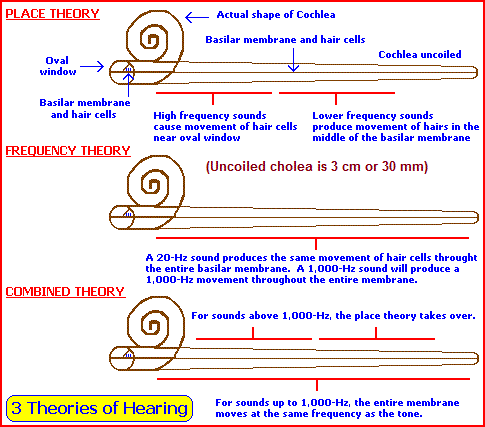 Language 3s page 1 |
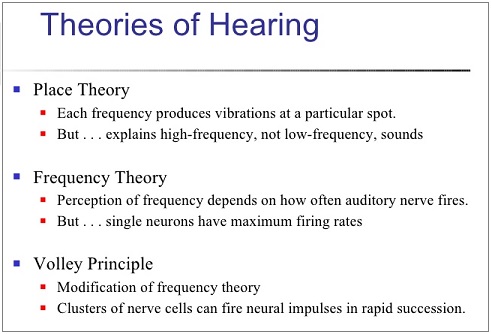 |
| 3 extrinsic muscles (Auricularis): | Anterior~ Superior~ Posterior |
| 3 sound conduction paths: | Electrical~ Mechanical~ Fluid or: Bone (solid)~ Air (gas)~ Fluid (liquid) |
| 3 nerve stimulation paths: | Mechanical~ Chemical~ Electrical |
| 3 outer hair cell rows |
typical in mammals but some sources give 3, 4, or 5 |
| Neurotrophin-3 (NT-3) is synthesized by inner and outer hair cells of the developing organ of Corti. | Brain-derived neurotrophic factor (BDNF) is also synthesized. (Prestin is the motor protein of the outer hair cells.) |
| 3 sound qualities: | Pitch~ Volume (intensity)~ Tone |
| 3 sound wave propagation processes: | Diffraction~ Transmission~ Reflection |
| 3 main forms of ossicular chain fixation: | Fluid~ Mechanical~ Otosclerosis |
| 3 classes of ossicular lever action: | Force arm~ Resistance arm~ Fulcrum |
| 3 acoustic distortion forms: | Frequency~ Phase~ Amplitude |
| 3 basic properties of vibrating bodies: | Inertia~ Elasticity~ Dissipation |
| 3 principal types of deafness: | Conduction~ Nerve~Stimulation |
| 3 types of hearing loss: | Conductive~ Sensorineural~ Mixed |
| 3 (inner ear) organs of balance: | Semicircular canals~ Utricle~ Saccule (collectively called the vestibular organ, which can be referred to as a {3-in-1} ratio.) |
Let's now move on to the hands and toes since the total quantity of them, like the total quantity of teeth are sometimes used by critics to argue against threesological compilations involving a recurring triplicity. It is a triple-pattern more easily seen when counting the number of bones in the fingers and toes since flesh tends to conceal this and leads many people to simply count the number of fingers and toes and not the total of their individual structures to note recurrences.
Interestingly, when we speak of development along a 1, 2, 3 maturational development sequence which may be followed by fusion (or regression) such as the horse's hoof made from the middle or third toe while the other toes become vestigial... like something kept in an attic, garage or basement "just in case" they may be needed again at some future day. The two-bone configuration of the human thumb and big toe suggests these came early in evolution or were "stunted" or interfered with in development and therefore could not acquire a third bone. Then again, if we look at the overall quantity of bones as illustrated in the following comments, the lesser quantity of bones in the feet might suggest a developmental primivity... that is if we can assume that the need for more bones indicated increased complexity. While such thoughts are speculative, they are philosophically relevant.
Yet when speaking of hooves, the horse's singular hoof having evolved from its "middle finger", is not the only variety. Please note that there is a conserved quantity... in that we don't have examples of five, six, seven-toed, etc; hooves. But even if we did, they too would constitute part of a conserved quantity. In other words, with all the number quantities available, we don't have large numbers being used, and hoof types are sometimes classified as odd and even-toed:
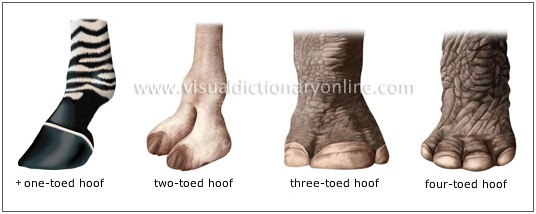
Merriam Webster visual dictionary
- one-toed hoof examples: horse, zebra and ass [also tapirs].
- two-toed "cloven" hoof examples: deer, giraffe, bull, sheep, camel [also: antelopes, gazelles, goats, and the devil] (two toes: anteater, sloth).
- three-toed hoof examples: rhinoceros (three toes: sloth).
- four-toed hoof examples: pig, wild boar, hippopotamus, elephant.
Another way of determining the type of hand/foot pattern is to look at various tracks (or stances, such as in birds):
> Pinterest: Animal Tracks |
|
|
The mental tracks of human emotive considerations: Various emoticons |
|
 Montana Science Partnership: Bird Classification |
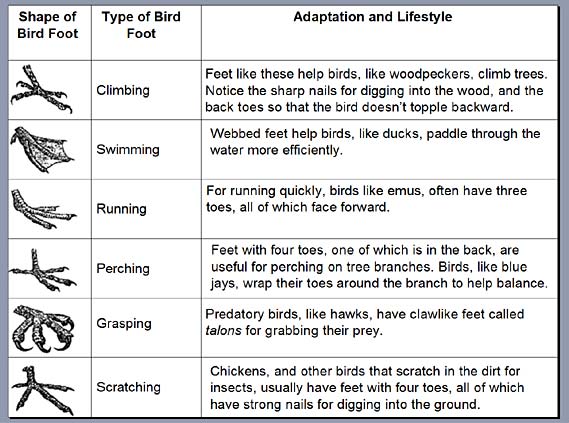 |
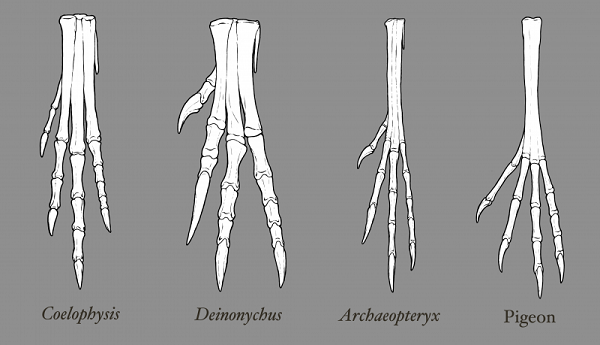 |
Two interesting points as an animal becomes more "birdlike": the hallux moves towards greater mobility, and the tarsometatarsus fuses. The tarsometatarsus of Archaeopteryx represents a unique semi-fused "transition" state between unfused and totally fused metatarsal bones. Emily Willoughby, Paleo-art and bird illustration |
|
The bones of the hand can be divided into three categories:
8 + 5 = 13... (3 X 4 + 2) = 14... 13 + 14 = 27 X 2 hands = 54 bones (like 54 in a deck of cards with the 2 jokers included) 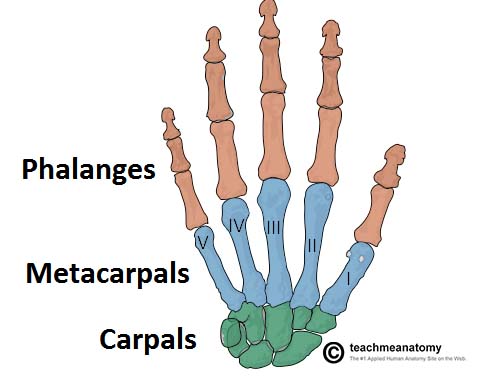 Teach Me Anatomy: Human hand bones |
|
The bones of the foot can be divided into three categories:
(7 + 5) = 12... + (3 X 4 + 2) = 14... 12 + 14 = 26 X 2 feet = 52 bones (like 52 in a deck of cards without the jokers), which provide us with 13 "ranks" (Ace, King, Queen, Jack, 2...10 of four cards each consisting of clubs, diamonds, spades and hearts)  Teach Me Anatomy: Human Foot bones |
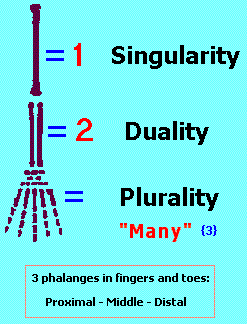
If we proceed from the multiple or "many" bones in the foot and hand towards the linked arm and leg appendages, it is a (philosophically) curious thing to note that the "many" is followed (or preceded) by two bones and these are followed (or preceded) by one bone. Hence, we have a "One- Two- Many" configuration that many a student studying anatomy may not take into (philosophical) consideration when increasing their knowledge with comparative anatomy. No less, when taking comparative anatomy into consideration, there may not be an interest for some to include other species like birds... because when the quantity of toes is counted, the difference can be dismissed by referring to the birds as "just birds"... and therefore have less value when an anatomical over-view is considered. Yet, philosophically, all life forms should be taken into account since they are part of the overall biosphere.
While the three divisions of the foot and hand might be viewed as arbitrary ones since other formulas might be used, we nonetheless find yet another "arbitrary" use of the "three". In other words, we do not find the same "arbitrary" usage of some other pattern. If an anthropologist were to claim that other cultures make use of other patterns such as two, four, five, etc., the word "culture" in the context of the Earth's environment must likewise be noted. In other words, it is the environment which is influencing such predispositions and the Earth's environment is deteriorating. The deteriorations may well account for what many describe as the "evolutionary" development of a species due to adaptations, accommodations, and rationalizations as a means of making adjustments to the deteriorations.
The three deteriorations which are taking place and humanity is not smart enough to deal effectively with, are:
- The moon is moving away (receding) from the Earth which results in a depletion of tidal ("washing machine") behavior.
- The rotation of the Earth is slowing causing a change in the electro-dynamo effect of the core/mantle/crust interactions.
- The Sun's energy is depleting and it is thought that along the course of its demise it will enlarge to the point of consuming the innermost three planets (Mercury, Venus, Earth). As seen from Earth, the enlargement will produce a "fusion" of the life-affecting three solar "moments" called dawn, noon, and dusk.
Because biology is fixed in the present environment, it is subjected to the incremental deteriorations and must make adaptations to the body/mind/spirit triad as a coping mechanism. Our business, political and religious belief systems make rationalized adjustments to environmental changes such as the change in seasons. If all of us were subjected to one or another weather pattern that incrementally increases and we could detect the changes, our lives would be accommodated accordingly. But even if you are not aware of incremental changes, you nonetheless make changes or are left adaptively unprepared and will suffer the consequences. Biology is a reflection, are different symbols of environmental influences... but most people appear to be unable to decipher what the symbols are or what they mean. Humanity is heading towards extinction in response to a deteriorating environment, because it persists in holding on to antiquated notions practiced by religion and nature ideas involving ludicrous notions such as "fatherland", "motherland" and "mother earth"... and will not sever the umbilical cord in order to sustain a longer viability away from the decaying planetary system.
Page initially created: Thursday, 10-August-2017... 4:49 AM
Initial Posting: Thursday, 07-Sept-2017... 5:18 PM
Updated Posting: Monday, 18th August, 2025... 7:10 AM